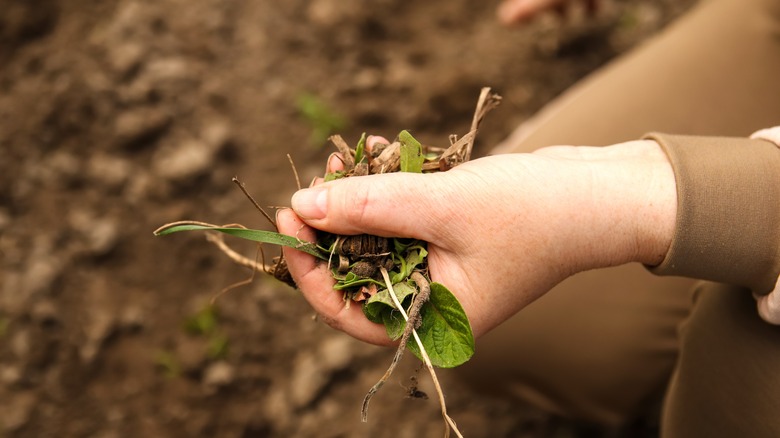If you’re finding that hairy bittercress has claimed territory in your lawn or garden, don’t worry — there are effective strategies to manage and even eradicate this persistent weed. The best option for removing the weed is simply pulling it out by hand. Mulching and herbicides have their place among management strategies as well. Regardless of method, the golden rule in your fight against hairy bittercress is to not let it germinate. Acting early is critical; once this weed seeds, it can spread at an alarming rate, complicating your control efforts significantly. Many prioritize removing hairy bittercress because it not only mars the look of their yards but also hogs nutrients and space vital for the growth of desirable plants.
To get started, correctly identifying this weed is your initial move. Hairy bittercress is a winter annual and part of the Brassicaceae family, which includes mustards and cresses. This small yet robust plant has its roots in Eurasia but has spread widely across the United States, adapting to a variety of climates and conditions. Its ability to grow in cool temperatures means it often appears as one of the first weeds in late winter or early spring, seizing the opportunity to sprout before many other plants begin their growth cycle. The plant is easily recognizable by its rosette of basal leaves and the small, white flowers that emerge on its stems. You’ll often find it invading areas where your lawn is sparse and in the bare patches in your garden beds.
Hand-pulling hairy bittercress

As mentioned, tackling hairy bittercress early on is crucial if you’re aiming to keep your lawn or garden free of this pesky intruder. You’ve got a couple of trusty tools at your disposal for this: your hands or a weeding implement. Hand-pulling hairy bittercress is satisfyingly effective because of the plant’s short-lived nature. Its roots don’t go deep, making it quite easy to pull out the entire plant, roots and all. For tougher-to-reach or stubborn plants, a hand tool can be your best ally, offering precision and minimizing disturbance to the surrounding plants.
Now, to put a lid on hairy bittercress’ numbers and keep it from popping up in the first place, you’ll want to deal with any bare patches of soil in your garden. Enter mulching, your garden’s best friend in this battle. Spread a layer of coarse-textured mulch. Aim for about 2 inches deep to effectively block any weed seeds from seeing the light of day, literally.
You can also keep hairy bittercress at bay by adopting a few smart lawn care practices. Start with mowing your lawn regularly as early spring rolls in. This helps nip those flowering stems in the bud before they have a chance to spread their seeds. Soil health cannot be overlooked, either. Give your turf a boost with the right fertilization plan, ensuring it gets all the nutrients it needs to grow thick and strong.
Using herbicides to remove hairy bittercress
In those instances where physical removal and cultural practices are not enough, herbicides offer a more aggressive approach to getting rid of weeds and controlling hairy bittercress. There are two types of herbicides that can be used: preemergence and postemergence. Preemergence herbicides, as the name suggests, prevent the weed seeds from germinating. They are applied to the soil before the seeds have a chance to sprout. Commonly used preemergence herbicides for controlling hairy bittercress include oryzalin, isoxaben, and oxadiazon. Postemergence herbicides, on the other hand, are applied directly to the weeds that have already emerged. These herbicides work by being absorbed into the plant and disrupting its growth processes, eventually leading to the weed’s death. Commonly used post-emergents include diquat, glufosinate, and glyphosate. In some cases, a combination of preemergence and postemergence herbicides may be the most effective strategy for controlling hairy bittercress, especially in areas where it has become a persistent problem.
Keep in mind that using preemergence herbicides typically also stops turfgrass seeds from sprouting. So it’s not only important to select a product; you’ll also need to plan accordingly to ensure that your efforts to prevent weed growth don’t inadvertently hinder the establishment or rejuvenation of your lawn. This requires careful timing and consideration, especially if you’re looking to overseed or repair patches in your grass. Lastly, always read and follow label directions when using any herbicide.
